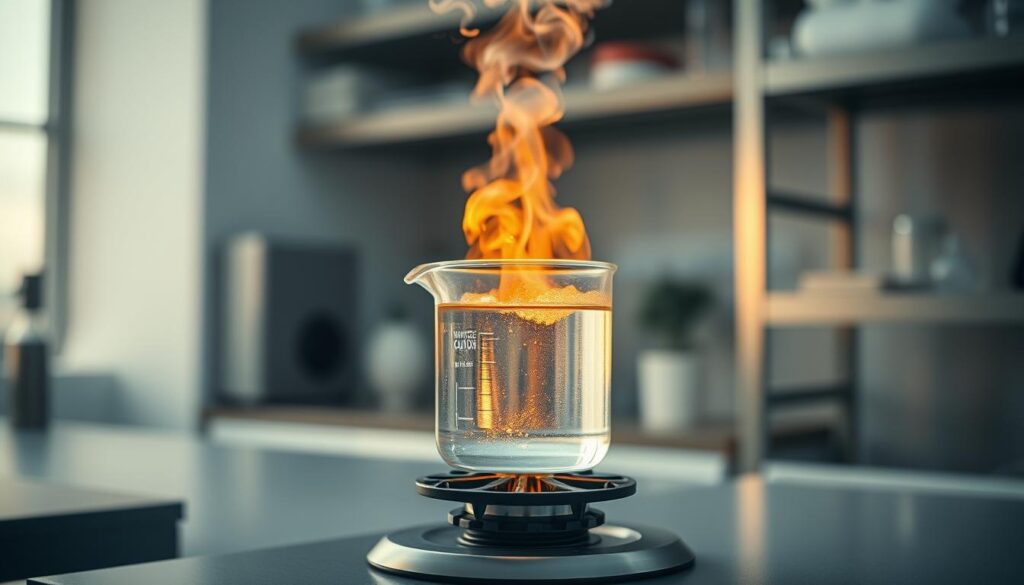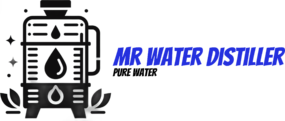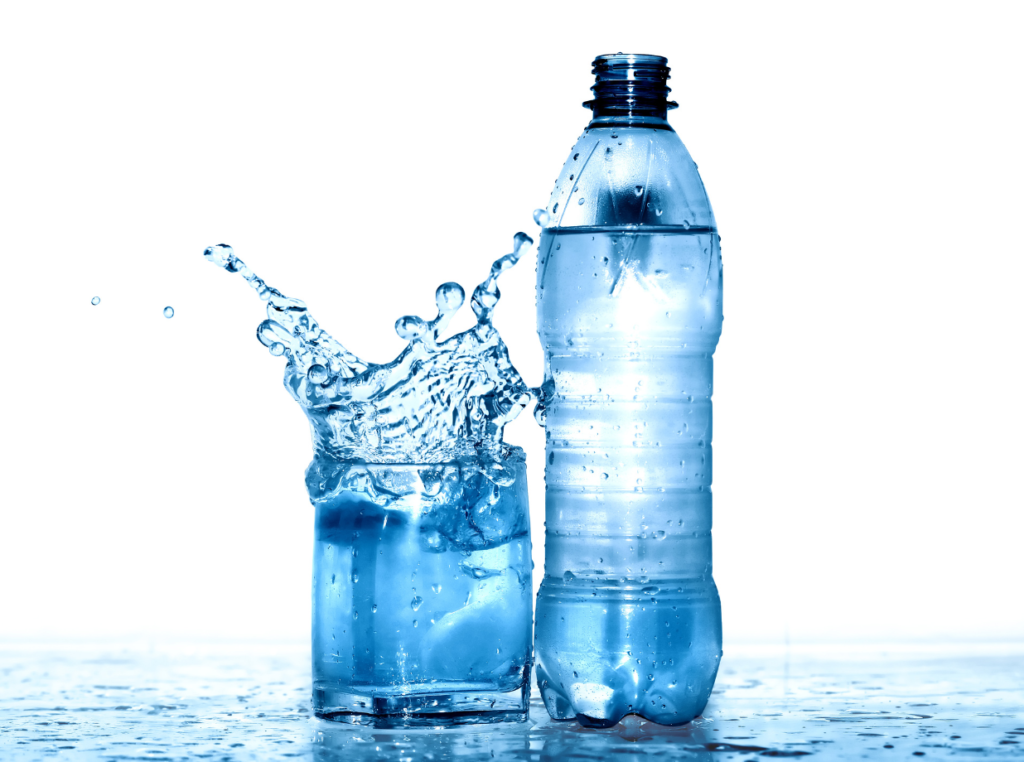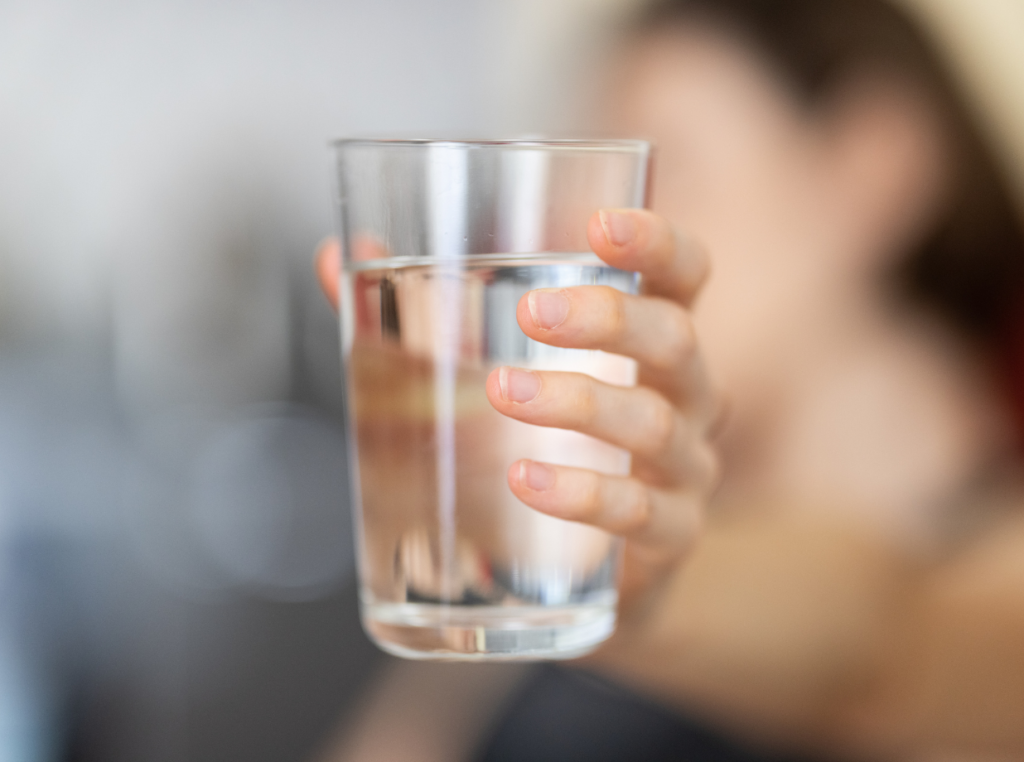Have you ever wondered if simply boiling water is enough to make it distilled? Many people assume that the process of boiling is equivalent to distillation, but is that really the case?
According to experts, boiling water is just one step in the distillation process. As one source notes, “Although heating water is an important step in the distillation process, simply boiling it in your kettle won’t make it distilled.”
This raises an important question: what exactly is the difference between boiling and distilling? Understanding the distinction is crucial for those seeking to purify their drinking water.
Key Takeaways
- Boiling water is not the same as distilling it.
- Distillation involves more than just heating water.
- The process of distillation is crucial for water purification.
- Understanding the difference between boiling and distilling is important.
- Distilled water has various applications.
The Difference Between Boiling and Distillation
Understanding the distinction between boiling and distillation is crucial for effective water purification. While both methods are used to purify water, they operate on different principles and achieve varying levels of purity.
What Happens When Water Boils
When water boils, it reaches its boiling point, typically at 212°F (100°C) at sea level. At this temperature, water turns into steam, which is a physical change.
Physical Changes During Boiling
During boiling, water undergoes a phase transition from liquid to gas. This process involves the absorption of heat energy, breaking the intermolecular forces between water molecules.
Temperature Thresholds
The boiling point of water is a critical temperature threshold. At this point, the vapor pressure of water equals the surrounding atmospheric pressure, allowing it to boil.
The Complete Distillation Process
Distillation is a more complex process that involves not just boiling, but also the condensation of steam back into liquid water. This process effectively removes impurities that boiling alone cannot.
Separation of Components
During distillation, water is heated until it vaporizes, leaving behind contaminants with higher boiling points. This vapor is then cooled and condensed, resulting in purified water.
Collection of Purified Water
The condensed steam, now distilled water, is collected separately from the contaminants. This water is significantly purer than the original source.
| Process | Description | Outcome |
|---|---|---|
| Boiling | Water is heated to its boiling point. | Water turns into steam, killing some bacteria. |
| Distillation | Water is vaporized and then condensed. | Produces purified water, removing many contaminants. |
Understanding Water Purification
Water purification is a critical process that ensures the water we drink is safe and free from harmful contaminants. This process is vital in removing various impurities that can affect the quality and safety of water.
Common Contaminants in Water
Water can be contaminated with a variety of substances, ranging from biological agents to chemical and mineral impurities.
Biological Contaminants
Biological contaminants include bacteria, viruses, and parasites that can cause waterborne diseases. Boiling water is a common method used to kill these microbes, making the water safer to drink.
Chemical and Mineral Impurities
Chemical and mineral impurities, such as heavy metals and nitrates, can also be present in water. Unlike boiling, distillation can remove these impurities, resulting in purer water.
Why Purification Matters
Purifying water is essential for both health and taste reasons. Consuming contaminated water can lead to serious health issues, while purified water tastes better and is safer to drink.
Health Implications
Drinking contaminated water can result in a range of health problems, from gastrointestinal issues to more severe conditions like cholera and typhoid fever. Purifying water at home can significantly reduce these risks.
Taste and Quality Considerations
Purified water not only tastes better but also improves the quality of water used for cooking and drinking. Methods like distillation can enhance the overall quality by removing impurities that affect taste and odor.
Does Boiling Water Distill It?
Many assume boiling water distills it, but is that assumption correct? Boiling water is a common method used to purify water, but the terms “boiling” and “distillation” are often confused. To understand whether boiling water distills it, we need to delve into the science behind both processes.
The Science Behind the Question
Distillation involves heating a liquid to produce vapor, which is then condensed back into a liquid, leaving impurities behind. Boiling water, on the other hand, involves heating water to its boiling point, killing pathogens but not necessarily removing all impurities.
Molecular Separation Principles
Distillation works on the principle of molecular separation, where water molecules are vaporized and then condensed, separating them from contaminants that have different boiling points. This process is effective in removing a wide range of impurities.
What Remains in Boiled Water
When water is boiled, pathogens are eliminated, but dissolved solids and other impurities remain in the water. Boiling does not separate these impurities from the water; it merely kills biological contaminants.
What Boiling Actually Accomplishes
Boiling water is an effective method for eliminating pathogens, including bacteria, viruses, and protozoa. However, it has its limitations when it comes to removing other types of contaminants.
Pathogen Elimination
Boiling water kills pathogens by applying heat, denaturing proteins, and disrupting cell membranes. This makes boiling an effective method for making water safe to drink in emergency situations.
Limitations of Heat Treatment
While boiling is effective against pathogens, it does not remove dissolved solids, heavy metals, or other chemical contaminants. For comprehensive water purification, additional methods are necessary.
As noted by experts, “Distillation is a physical process that involves the conversion of a liquid to a vapor and then back to a liquid, effectively removing impurities.” This highlights the difference between boiling and distillation.
| Process | Effect on Pathogens | Effect on Dissolved Solids |
|---|---|---|
| Boiling | Kills pathogens | No removal |
| Distillation | Kills pathogens | Removes dissolved solids |
How Distillation Works
Distillation is a purification method that has been used for centuries to produce clean drinking water. This process involves the transformation of water from its liquid state to vapor and back to liquid, effectively removing contaminants and impurities.
The Evaporation Process
The evaporation process is the first step in distillation, where water is heated to produce vapor. This process is crucial in separating water from its contaminants.
Heat Application and Vapor Formation
When water is heated, the molecules gain energy and transition from a liquid to a gas state, forming vapor. This vapor is then collected and processed further.
Separation from Contaminants
As the vapor is formed, it leaves behind contaminants that have higher boiling points than water, effectively separating the pure water from the impurities.
Condensation and Collection
After the vapor is formed, it is cooled, causing it to condense back into liquid water. This step is critical in recovering the purified water.
Cooling Mechanisms
Cooling mechanisms, such as condensers, are used to cool the vapor, facilitating its condensation back into liquid water.
Pure Water Recovery
The condensed water is then collected, resulting in purified water that is free from many contaminants.
Equipment Needed for Distillation
The equipment required for distillation can vary from simple setups to complex systems, depending on the scale and purpose of the distillation.
Basic Components
Basic distillation equipment includes a container for the water to be distilled, a heating source, a condenser, and a collection vessel.
Advanced Distillation Systems
Advanced distillation systems may include additional features such as multiple stages of distillation, automated controls, and enhanced condensation mechanisms.
What Boiling Water Can and Cannot Remove
Understanding what boiling water can and cannot remove is crucial for determining its effectiveness as a purification method. Boiling water is a widely used technique for killing pathogens, but its limitations need to be acknowledged.
Pathogens Eliminated by Boiling
Boiling water is effective against a broad range of pathogens. Specifically, it can eliminate:
Bacteria and Viruses
Boiling water kills bacteria and viruses that can cause waterborne diseases. This includes common pathogens like E. coli and rotavirus.
Parasites and Their Eggs
Boiling water also eliminates parasites and their eggs, such as Giardia and Cryptosporidium, which are notorious for causing gastrointestinal issues.
Contaminants That Remain After Boiling
Despite its effectiveness against pathogens, boiling water leaves behind various contaminants. Notably:
Heavy Metals and Minerals
Boiling water does not remove heavy metals and minerals, which can be present in significant amounts depending on the source of the water.
Chemical Pollutants
Chemical pollutants, including pesticides and industrial chemicals, remain in the water after boiling, posing potential health risks.
Comparing Effectiveness with Other Methods
To understand the effectiveness of boiling water, it’s essential to compare it with other purification methods.
Boiling vs. Filtration
Filtration can remove a broader range of contaminants, including heavy metals and chemical pollutants, making it a more comprehensive purification method.
Boiling vs. Chemical Treatment
Chemical treatment can also be more effective than boiling alone, as it can target specific contaminants that boiling cannot remove.
| Purification Method | Pathogens Removed | Heavy Metals Removed | Chemical Pollutants Removed |
|---|---|---|---|
| Boiling | Yes | No | No |
| Filtration | Yes | Yes | Yes |
| Chemical Treatment | Yes | Partially | Yes |
“Boiling water kills microbes but leaves behind impurities like minerals,” as noted by a recent study, highlighting the limitations of boiling as a purification method.
Home Distillation Methods
Distilling water at home can be achieved through various methods, ranging from simple DIY setups to commercial distillers. This flexibility makes it accessible to anyone looking to purify their drinking water.
Simple DIY Distillation Setups
For those who prefer a hands-on approach, DIY distillation setups are a cost-effective and straightforward way to start distilling water at home.
Kitchen Counter Methods

A simple method involves using a pot and a glass bowl. By boiling water and collecting the condensation, you can effectively distill water on your kitchen counter.
Emergency Distillation Techniques
In survival situations, being able to distill water can be crucial. Techniques such as using a solar still or a simple pot and tube method can provide clean drinking water when needed most.
Commercial Home Distillers
For those who prefer a more automated solution, commercial home distillers offer a convenient and efficient way to purify water at home.
Countertop Units
Countertop distillers are compact and designed for daily use. They are easy to operate and maintain, providing a steady supply of distilled water.
Larger Capacity Systems
For households with higher demands, larger capacity distillers are available. These systems can produce more distilled water, making them suitable for families or for use in commercial settings.
| Distillation Method | Cost | Effectiveness |
|---|---|---|
| DIY Setup | Low | High |
| Commercial Distiller | Moderate to High | Very High |
As shown in the table, both DIY setups and commercial distillers have their advantages. While DIY methods are cost-effective, commercial distillers offer higher capacity and ease of use.
“Distillation is a simple, yet effective method for purifying water. It’s a process that has been used for centuries to produce clean drinking water.”
In conclusion, home distillation methods offer a range of options for purifying water, from simple DIY setups to more sophisticated commercial distillers. By understanding how distillation works and the various methods available, individuals can make informed decisions about their water purification needs.
Other Effective Water Purification Techniques
Boiling water is just one of many methods to purify water; other techniques include filtration, chemical treatments, and UV purification. While boiling is effective against many pathogens, other methods can remove a broader range of contaminants, including dissolved solids and chemicals.
Filtration Systems
Filtration systems are a popular alternative for water purification. They work by passing water through a filter medium that traps contaminants.
Carbon Filters
Carbon filters are effective at removing chlorine, taste, and odor from water. They can also reduce levels of certain chemicals and heavy metals.
Reverse Osmosis
Reverse osmosis systems force water through a semi-permeable membrane, removing up to 99% of contaminants, including dissolved solids.
Chemical Treatments
Chemical treatments involve adding disinfectants to water to kill pathogens.
Chlorination
Chlorination is a widely used method for disinfecting water. It effectively kills bacteria and viruses.
Iodine and Other Disinfectants
Iodine and other disinfectants like chlorine dioxide can also purify water. They are often used in emergency situations.
UV Purification
UV purification uses ultraviolet light to kill pathogens in water.
How UV Light Kills Pathogens
UV light damages the DNA of bacteria and viruses, rendering them unable to reproduce.
Limitations of UV Treatment
UV treatment is ineffective against particulate matter and certain chemicals. It also requires clear water to be effective.
These alternative methods offer various benefits and can be used depending on the specific needs and circumstances.
The Benefits of Properly Distilled Water
Properly distilled water offers numerous benefits due to its high purity levels. The distillation process removes impurities, resulting in water that is almost completely pure.
Purity Levels Achieved
The purity of distilled water is one of its most significant advantages. Distillation effectively removes contaminants, achieving very high purity levels.
Measurement Standards
Purity is measured using various standards, including parts per million (ppm) of total dissolved solids (TDS). Distilled water typically has a very low TDS count.
Comparison to Other Water Types
Compared to other types of purified water, distilled water has one of the lowest TDS counts, making it exceptionally pure. Other water purification methods may not achieve the same level of purity.
Health Considerations
Drinking distilled water has both advantages and potential drawbacks. On the positive side, it is free from many contaminants that can be harmful to health.
Advantages of Mineral-Free Water
One benefit of distilled water is that it is mineral-free, which can be advantageous for people with certain health conditions that require minimal mineral intake.
Potential Drawbacks to Consider
However, distilled water lacks minerals that are typically present in drinking water, which could be a drawback for some individuals. It’s essential to weigh these factors when considering distilled water for consumption.
Common Misconceptions About Boiling and Distillation
The process of making water safe to drink is often shrouded in misconception. Many believe that boiling water is the same as distilling it, but this is not the case. Understanding the differences between these methods is crucial for effective water purification.
Myths About Boiled Water
Boiling water is a common method for purifying water, but it’s not without its myths. One of the most prevalent is the belief that boiling removes all contaminants.
“Boiling Removes All Contaminants” Myth
While boiling water can kill pathogens, it doesn’t remove all contaminants. Heavy metals, certain chemicals, and other pollutants can remain. As one expert notes,
“Boiling water is effective against bacteria, viruses, and parasites, but it doesn’t remove dissolved solids or other impurities.”
Boiling Time Misconceptions
Another myth is that boiling water for a longer time makes it safer. In reality, bringing water to a rolling boil for 1-3 minutes is usually sufficient to kill most pathogens. Boiling for longer doesn’t necessarily make it safer.
Misunderstandings About Distillation
Distillation is another effective method for purifying water, but it’s also subject to misconceptions. Some believe that distilled water is completely mineral-free.
Distilled Water and Mineral Content
While distillation can remove many minerals, the extent depends on the distillation process. Some distillers may retain certain minerals, while others remove nearly all of them.
Energy Efficiency Myths
Some people think distillation is highly energy-inefficient. However, modern distillers have become more energy-efficient, making them a viable option for home use.

When to Boil vs. When to Distill
Understanding when to boil water versus when to distill it is crucial for ensuring access to safe drinking water. Both methods have their advantages and are suited for different situations.
Emergency Situations
In emergency situations, the choice between boiling and distilling water can be critical. Boiling water is often the more immediate solution as it requires less equipment.
Natural Disasters
During natural disasters, boiling water is a quick and effective way to make water safe to drink. It eliminates pathogens and is a straightforward process that doesn’t require specialized equipment.
Traveling in Areas with Unsafe Water
When traveling in areas with questionable water quality, distillation can provide a higher level of purity. Distillation not only removes pathogens but also other contaminants like heavy metals and certain chemicals.
Daily Use Considerations
For daily use, the decision between boiling and distilling water depends on the specific needs of the household.
Household Applications
Boiling water is sufficient for many household needs, such as cooking and cleaning. However, for applications where highly purified water is required, such as in laboratories or for certain industrial processes, distillation is preferred.
Special Uses for Distilled Water
Distilled water is ideal for uses that require high purity, such as in automotive cooling systems, steam irons, and certain medical equipment. Using distilled water in these applications can help prevent damage from mineral deposits.
Environmental and Energy Considerations
As we explore the nuances of boiling water and distillation, it’s crucial to consider the environmental and energy implications of these processes. Both methods are widely used for water purification, but they have different energy requirements and sustainability factors.
Energy Requirements for Different Methods
The energy needed to boil water versus distill it can vary significantly. Boiling water requires bringing the water to a rolling boil, which can be done with various energy sources, including electricity, gas, or other fuels.
Fuel Consumption Comparison
A comparison of fuel consumption between boiling and distillation reveals that distillation often requires more energy due to the need to maintain a consistent heat source over a longer period.
| Method | Energy Source | Fuel Consumption |
|---|---|---|
| Boiling | Electricity/Gas | Low-Moderate |
| Distillation | Electricity/Gas | Moderate-High |
Efficiency Improvements
Improving the efficiency of distillation can be achieved through better insulation and optimized equipment design, reducing the overall energy consumption.
Sustainability Factors
Sustainability is another critical aspect, involving not just energy but also resource usage and long-term environmental impact.
Resource Usage
The resources required for distillation, including water and energy, need to be considered in the context of sustainability.
Long-term Environmental Impact
The long-term environmental impact of repeated distillation processes can be mitigated by using renewable energy sources and sustainable practices.
Conclusion
Purifying water at home is a crucial step in ensuring access to safe drinking water. Throughout this article, we’ve explored various water purification methods, including boiling and distillation. While boiling water is effective against pathogens, distillation offers a more comprehensive solution by removing a broader range of contaminants.
Understanding the differences between boiling and distillation is essential for choosing the right water purification method for your needs. Boiling is a simple and effective way to eliminate pathogens, but it doesn’t remove other contaminants like heavy metals or chemicals. Distillation, on the other hand, involves the evaporation and condensation of water, resulting in a purer product.
When it comes to purifying water at home, considering the equipment and energy requirements is vital. Home distillation methods, including DIY setups and commercial distillers, offer a convenient way to produce clean drinking water. By understanding the benefits and limitations of different water purification methods, individuals can make informed decisions about their drinking water.
In conclusion, both boiling and distillation have their roles in water purification. By choosing the right method, individuals can ensure access to safe and clean drinking water, aligning with their specific needs and circumstances.



